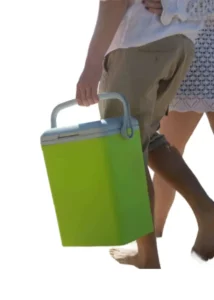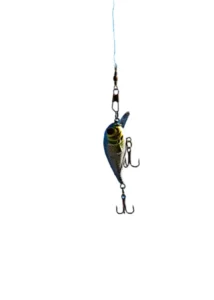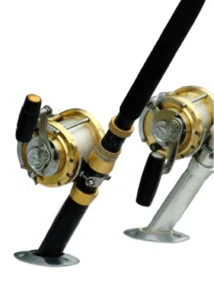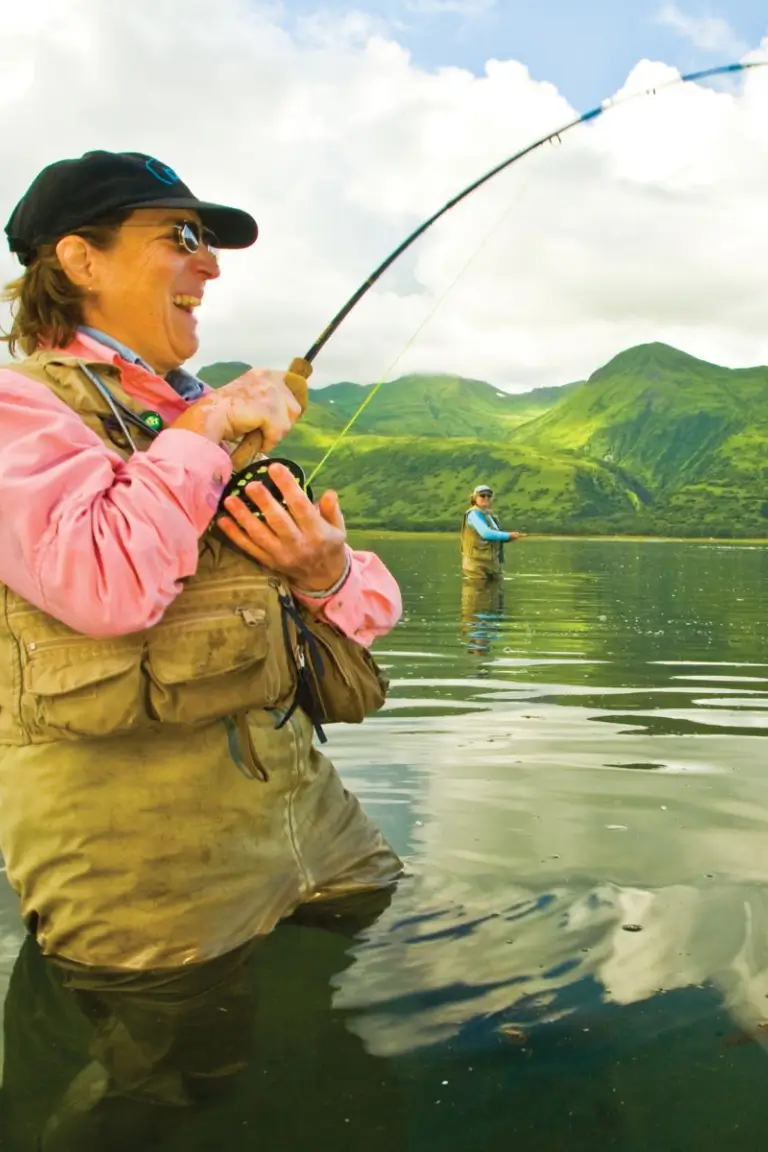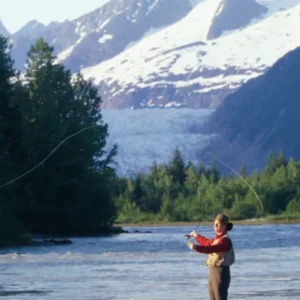Alaska is a fisherman’s paradise, with some of the best fishing in the world.
However, timing your trip to coincide with peak fishing seasons will greatly improve your chances of landing trophy fish.
In this post, I’ll share with you everything you need to know about the best months and seasons to go fishing in Alaska.
Key Takeaways
- May through September is peak fishing season in Alaska for salmon and halibut.
- Grayling fishing is best from June through August.
- Each salmon species runs at different times; plan around what you want to catch.
- Shoulder seasons in late August/September and October can still offer great fishing.
- Winter fishing for trout and burbot is possible (and fun!) under the Northern Lights.
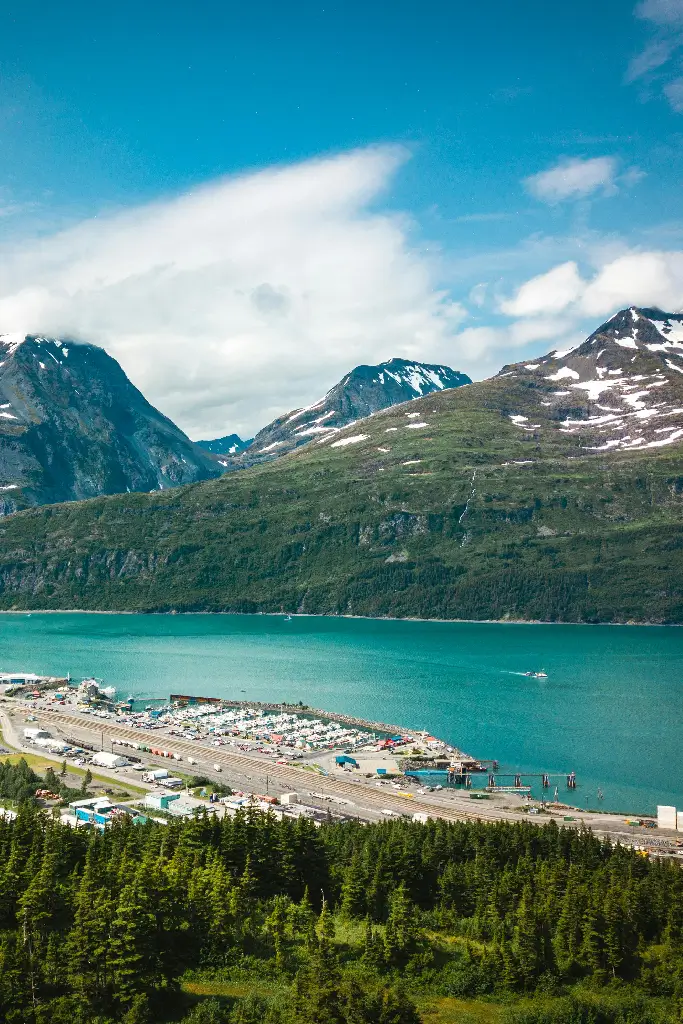
Furrtrekker is reader-supported. I may earn a small commission through these links. For more details, please read our privacy policy.
When is the best time to go fishing?
Peak Season: May – September Summer is hands down the best time to fish in Alaska.
Long daylight hours and warmer temperatures get fish moving into rivers, streams, and bays to feed.
This is when you’ll find the most outfitters operating and prime conditions for targeting trophy salmon or monster halibut out in the ocean.
Salmon Runs by Month
Alaska is famous for its abundant salmon runs, which bring anglers from all over the world.
The five major Pacific salmon species – Chinook (king), sockeye (red), coho (silver), chum (dog), and pink (humpy) salmon – each have slightly different peak seasons:
May:
This is the start of king salmon fishing season. These trophy fish range from 20 to 50+ pounds.
The early kings arrived in popular Southcentral rivers like the Kenai, Nushagak Rivers, and Kasilof first.
Take note the largest of the salmon may continue to run from May through July, with peak times in May and June.
June:
King salmon fishing hits its stride in June on the Kenai Peninsula and in Southeast Alaska.
This month also marks the beginning of the summer sockeye run.
Abundant sockeye salmon continue to run from June through August all over Alaska.
For incredible action, head to places like the Russian and Kenai Rivers where thousands fill the waters.
July:
Sockeye salmon runs are going strong in places like the Copper River, Russian, Kenai River, and Bristol Bay.
This is the peak of sockeye season and continues to run June through August all over Alaska.
July is one of the most popular times to fish in Alaska.
August:
The sockeye run winds down in early August while silver salmon start flooding the rivers, making August an excellent month to catch both reds and silvers.
Silver salmon runs start in August and last through September.
Also called coho, these athletic fish put up a great fight, leaping multiple times.
Silvers range from 8-15 pounds, with a few 20+ pounders caught each season.
Popular silver salmon fisheries include the Kenai River, Prince William Sound, Southeast Alaska, and Kodiak Island.
September:
The silver salmon run overlaps with the tail end of sockeye season.
Silvers peak in late August and September before the final push in October.
This diverse overlap makes fall a great time to fish in Alaska.
Best Seasons for Halibut & Other Species
While salmon get most of the glory in Alaska, you can also catch trophy-sized halibut, rainbow trout, Arctic char, grayling, pike, and other species.
Pink Salmon
You can catch pink salmon from late June through September depending on location.
While smaller than other salmon species at just 3-5 pounds, pinks are abundant allowing you to catch limits of fish.
Rivers like the Russian and Kenai have strong pink runs, as do streams in Southeast Alaska.
Chum Salmon
Chum salmon swim upstream later in the fall from July through September.
Ranging from 8-20 pounds, they are known for their impressive spawning displays, turning crazy colors, and developing teeth.
Chum are found on Kodiak Island, the Inside Passage, and Arctic rivers like the Yukon and Kuskokwim.
Halibut
The season for halibut fishing is May through mid-September.
These months bring nice weather and the best tide conditions for keeping your line close to the seafloor where halibut live.
These delicious flatfish range from small “chickens” to massive 300+ pounders.
You can catch them from shore or on guided charter boats out of Seward, Homer, Kodiak, Sitka, Juneau, and other coastal towns.
Rainbow Trout & Arctic Char
You can fish for trout and char from ice-free lakes and streams May through September. For winter fishing, these species are abundant during the ice fishing months.
Arctic Grayling
The sailfish of the North is an acrobatic sportfish that thrives in cold Interior streams and rivers.
Peak grayling fishing is from June through August.
Shoulder Season Fishing
While summer is the most popular and productive season, April/May and September/October still offer good fishing in Alaska.
In spring, you can target trophy rainbow trout as they leave lakes and follow river systems out to the ocean.
Late summer coho salmon runs are strong, with continued good halibut fishing. The fall silver salmon run lasts into November in some areas.
The benefit of shoulder season fishing is smaller crowds, better prices on accommodations, and still great potential to catch fish.
Just be prepared for more variable weather with colder temperatures, rain, and wind.
Winter Fishing
Once the rivers freeze over and salmon finish spawning, most anglers hang up their rods for the season.
But winter fishing for species like rainbow trout, Dolly Varden, burbot, and pike is totally viable – and a unique Alaskan experience.
The key is accessing open water. Guided ice fishing trips target trout lakes that don’t freeze completely due to depth, currents, and springs.
You can also fish open sections of rivers below dams. And certain areas of Alaska’s oceans don’t freeze, allowing you to drop lines for winter cod, flounder, and even halibut.
While winter fishing is often overlooked, it offers a special chance to catch fish under the Northern Lights. Just be sure to dress warmly for maximum comfort out on the frozen tundra.
Shop the Tools
Weather, Crowds & Prices by Season
Along with fish availability, it’s also helpful to consider weather, crowds, and prices when deciding the best time to visit Alaska.
June & July:
Late spring and early summer offer mild weather and nearly round-the-clock daylight.
June and July are very popular for fishing, so expect crowds of anglers at prime salmon streams.
Prices also peak in mid-summer.
August & September:
By August, daylight hours decrease but temperatures remain mild.
August/September offers excellent fishing with fewer crowds and lower prices outside of holiday weekends.
This is an ideal time to visit if you prefer smaller crowds.
October & November:
Fall weather is unpredictable with colder temperatures and a rain/snow mix possible.
However, the beautiful fall foliage and lack of crowds make autumn a special time to visit. Just bring extra layers!
December – April:
Only the diehard anglers fish Alaska in the winter! Ice fishing for trout and Arctic char can be outstanding from December through April.
You’ll also find great deals on lodges and flights during the off-season.
Travel Tips
Get a Fishing License: If you’re planning to fish in Alaska, you must have a valid fishing license. Not having one can lead to legal consequences. But don’t worry, you can easily purchase it online or from various locations within the state.
Hire a Fishing Guide or Charter: For first-time visitors to Alaska who want to go fishing, it’s best to hire a fishing guide or charter service for easy access to the best fishing spots, equipment, and expertise. 🎣
How to Choose When to Visit Alaska for Fishing
With so many options, deciding when to plan your Alaska fishing adventure can be tricky. Here are a few key things to consider:
- Target Species & Run Timing: Plan your dates around the peak times of your dream fish to up your chances. King salmon runs from May to July, with peak times in May and June. June to July is the best time for feisty silvers, while sockeye runs from June to August.
- Combos & Variety: If you just wanna catch as many fish as possible, early August is primo. You’ll hit the overlap between sockeye, pink, chum AND silver salmon runs. Multi-species combos like salmon plus halibut are also possible that time of year.
- Winter Adventures: Don’t overlook winter fishing either for a unique trip. You can reel in trout under the Northern Lights or battle monster lingcod through the ice. Just be sure to bundle up against the cold and shorter daylight hours.
FAQs
Still have questions? Here are answers to some frequently asked questions about fishing in Alaska:
What is the rainiest month for fishing in Alaska?
October sees the most rainfall in Alaska on average. However, rainy weather can happen sporadically any month, so always pack waterproof layers.
Can I fish in Alaska during the winter?
Ye. Ice fishing for trout, Arctic char, and other species is popular from December through April when lakes and rivers freeze over. Just be prepared for frigid temperatures.
How far in advance should I book an Alaska fishing trip?
If you want the best guides and lodges during peak season, aim to book 6-12 months in advance. For fall shoulder seasons, you may be able to book a few months ahead of time.
I hope this comprehensive guide gets you excited to plan your own Alaskan fishing adventure during peak season!
Just be strategic in planning around peak runs for your target species. And once you settle on dates, book your fishing charters or lodges well in advance to secure a spot during busy season.
Let me know if you have any other questions.
More Travel Blogs:
Furrtrekker Travel Checklist
Packing List
- Sweaters and jackets
- Booties
- Fleece bed
- Travel crate
- Food and water bowls
- Favorite toys and treats
- Medications
- First aid kit
How to Organize and Pack
- First, gather your dog's cold weather gear. This includes booties, sweaters, jackets, fleece bed, and travel crate.
- Sweaters and jackets: Choose styles with coverage and insulation to retain body heat. Fleece and wool blends work well.
- Booties: Protect those paws from snow and ice. Look for flexible rubber soles and adjustable velcro closures.
- Fleece bed or travel crate: Line their crate or car kennel with a cozy fleece mat for comfort.
- Next, don't forget your dog's daily supplies like food, water bowls, toys, treat, medications, and first aid kit.
- Food and water bowls: Pack collapsible bowls to save space.
- Toys and treats: Bring comforts from home for security.
- Medications: If your dog takes any meds, bring extra.
- First aid kit: Include bandages, antiseptic, tick removal tools, and many others.
- When packing, organize items into categories using packing cubes, bags or bins.
- This keeps similar things together so you can quickly grab what you need.
- Place bulkier gear like beds on bottom. Top with medium items such as bowls and toys.
- Add meds, first aid supplies last so they're easily accessible.
